 |
by Mariella Moon on (#6HWKK)
Back in 2021, Uber purchased Drizly for $1.1 billion shortly after it reported that its food delivery segment kept its losses manageable during the pandemic. Three years later, the company is shutting down the US-based alcohol delivery service, Axios has reported. Pierre-Dimitri Gore-Coty, Uber's SVP of delivery, told the publication that the company has decided to close the business and to focus on its "core Uber Eats strategy."In SEC's announcement of the acquisition, Drizly was described as a service that "works with thousands of local merchants to provide consumers with an incredible selection of beer, wine, and spirits with competitive, transparent pricing." Uber integrated Drizly's offerings into its Eats app, but the alcohol delivery service maintained a separate application of its own."After three years of Drizly operating independently within the Uber family, we've decided to close the business and focus on our core Uber Eats strategy of helping consumers get almost anything - from food to groceries to alcohol - all on a single app," Gore-Coty said in a statement. "We're grateful to the Drizly team for their many contributions to the growth of the BevAlc delivery category as the original industry pioneer."It's unclear if Drizly's cybersecurity issues played a role in Uber's decision. Drizly previously confirmed a data breach in 2020 that exposed the information of 2.5 million customers. After Uber's acquisition, the Federal Trade Commission found that Drizly CEO James Cory Rellas was alerted about the company's security issues way back in 2018. The agency determined that the delivery service failed to implement the proper safeguards to protect its users despite claiming it had done so and that its poor security practices made the data breach possible. It ordered Drizly to destroy any personal data it collected that had nothing to do with its services and to refrain from collecting them in the future. The FTC also required Rellas to implement information security programs at any company he joins or forms where he takes on the role as CEO. Either way, Drizly is gone, but Uber seems to intend to continue delivering alcohol to its customers.This article originally appeared on Engadget at https://www.engadget.com/uber-shuts-down-alcohol-delivery-service-drizly-three-years-after-its-purchase-065818346.html?src=rss
|
 Engadget is a web magazine with obsessive daily coverage of everything new in gadgets and consumer electronics
Engadget is a web magazine with obsessive daily coverage of everything new in gadgets and consumer electronics
| Link | https://www.engadget.com/ |
| Feed | https://www.engadget.com/rss.xml |
| Copyright | copyright Yahoo 2025 |
| Updated | 2025-12-20 11:17 |
 |
by Richard Lai on (#6HWEV)
As the US gears up for the 2024 presidential election, OpenAI shares its plans on suppressing misinformation related to elections worldwide, with a focus set on boosting the transparency around the origin of information. One such highlight is the use of cryptography - as standardized by the Coalition for Content Provenance and Authenticity - to encode the provenance of images generated by DALL-E 3. This will allow the platform to better detect AI-generated images using a provenance classifier, in order to help voters assess the reliability of certain content.This approach is similar to, if not better than, DeepMind's SynthID for digitally watermark AI-generated images and audio, as part of Google's own election content strategy published last month. Meta's AI image generator also adds an invisible watermark to its content, though the company has yet to share its readiness on tackling election-related misinformation.OpenAI says it will soon work with journalists, researchers and platforms for feedback on its provenance classifier. Along the same theme, ChatGPT users will start to see real-time news from around the world complete with attribution and links. They'll also be directed to CanIVote.org, the official online source on US voting, when they ask procedural questions like where to vote or how to vote.Additionally, OpenAI reiterates its current policies on shutting down impersonation attempts in the form of deepfakes and chatbots, as well as content made to distort the voting process or to discourage people from voting. The company also forbids applications built for political campaigning, and when necessary, its new GPTs allow users to report potential violations.OpenAI says learnings from these early measures, if successful at all (and that's a very big "if"), will help it roll out similar strategies across the globe. The firm will have more related announcements in the coming months.This article originally appeared on Engadget at https://www.engadget.com/openai-lays-out-its-misinformation-strategy-ahead-of-2024-elections-022549912.html?src=rss
|
 |
by Devindra Hardawar on (#6HWBX)
Almost a year since Microsoft launched its ChatGPT-powered Bing Chat - which is now just called Copilot - the company is announcing its next major AI moves. First, it's launching Copilot Pro, a $20 monthly subscription that gives power users access to the latest ChatGPT releases, as well as access to Copilot in Microsoft 365 apps and other new features. Additionally, the Copilot iOS and Android apps are now available to everyone, following a limited launch last month.And that's not all! Microsoft also introduced Copilot GPT, a new feature that will let you tweak Copilot around specific topics like "fitness, travel, cooking and more," according to Microsoft EVP and Windows head Yusuf Mehdi. Copilot Pro users will also be able to create their own Copilot GPTs eventually. (And yes, the name is certainly confusing, but this appears to be Microsoft's version of OpenAI's standalone GPTs.)Microsoft says that Copilot Pro users will have access to GPT-4 Turbo at peak times starting today, and eventually they'll be able toggle between different GPT models. The subscription also grants you better AI image creation, which will be faster and deliver higher image quality, with optional landscape formatting. It's also worth noting that Copilot Pro is $20 a month per user - plan to shell out more if multiple people in your household need access.While Copilot and Microsoft's onslaught of AI announcements throughout 2023 led to plenty of publicity - it actually made us care about poor old Bing again! - it remains to be seen if it actually ends up being useful to general users. That may explain the rush to monetize Copilot for power users so quickly. Copilot queries are expensive, both in terms of computation power and energy use, so Microsoft needs a way to actually recoup some of those costs from its most aggressive users. The company also needs to make good on its $13 billion investment in OpenAI, which gave it a 49 percent stake in the AI firm (and once again raised regulatory scrutiny).Given how strongly linked they are, it's no wonder Microsoft CEO Satya Nadella was instrumental in getting OpenAI co-founder Sam Altman re-instated as CEO, following a dramatic battle with the company's board of directors.Alongside Copilot Pro, Microsoft says that Copilot for Microsoft 365 is now widely available to small companies with its "Business Premium" and "Business Standard" subscriptions. The pricing hasn't changed from its earlier enterprise launch, though: It's still $30 a month per person (except now you can buy between 1 and 299 seats).This article originally appeared on Engadget at https://www.engadget.com/microsoft-copilot-pro-is-a-20-monthly-subscription-for-advanced-ai-features-234847522.html?src=rss
|
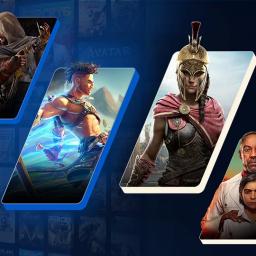 |
by Kris Holt on (#6HWAA)
Ubisoft is revamping its games subscription service by offering a premium multi-platform plan and adding a less-expensive tier on PC. The company is merging Ubisoft+ Multi-Access and PC Access into Ubisoft+ Premium. The new PC tier is called Ubisoft+ Classics. Ubisoft says there will be no automatic changes for existing PC Access subscribers, whose plan will remain the same at current pricing.Ubisoft+ Premium will run you $18 per month (that's $1 more per month than Game Pass Ultimate, fact fans). It includes access to the premium versions of Ubisoft games, all expansions and monthly rewards. Most importantly, you'll be able to play new Ubisoft games on the day they drop. Select games will be available in early access too. For instance, if you sign up now, you can immediately check out Prince of Persia: The Lost Crown, which Ubisoft won't officially release until January 18.What's more, an Ubisoft+ Premium subscription works across Xbox, PC and Amazon Luna. So you might chip away at Avatar: Frontiers of Pandora on your PC during the work day (we won't tell your boss), continue where you left off on your Xbox after dinner and then wind down for the day by flying around on the back of an ikran on your phone when you're in bed.Alongside the Ubisoft+ Premium shake up, the company has unveiled Ubisoft+ Classics on PC. This includes access to a collection of "popular back-catalog and live games" for $8 per month. Titles available include Far Cry 6, Rainbow Six Siege and Watch Dogs: Legion. It's worth noting that PlayStation Plus Extra and Premium subscribers have access to the Ubisoft+ Classics lineup at no extra cost.Ubisoft's head of subscriptions, Philippe Tremblay, says that Ubisoft+ has outperformed the publisher's expectations in terms of membership numbers. "We've seen millions of players since launch, and they've enjoyed over 600 million hours of play," Tremblay told the Ubisoft blog. Tremblay added that the company decided to introduce Ubisoft+ Classics as "we think it's a strong offer at the price point, and the catalog will only grow as we keep adding games to it as time goes on, so players can discover even more of our worlds."While the pricing of the respective services may be off putting for some, it's worth bearing in mind that Microsoft sold the cloud gaming rights for Activision Blizzard games to Ubisoft in an attempt to appease regulators (it worked). Back in August, Ubisoft said the agreement meant that its subscribers will eventually be able to stream Activision Blizzard games. Ubisoft hasn't yet shared a timeline for adding those titles to its service. "We're working on the offering right now to make sure it's the best possible experience for our subscribers, and we'll have more to share later," Tremblay said.This article originally appeared on Engadget at https://www.engadget.com/ubisoft-now-comes-in-two-flavors-and-costs-up-to-18-per-month-210443888.html?src=rss
|
 |
by Kris Holt on (#6HW8H)
It seems that Apple will be able to bypass an import ban on Apple Watch Series 9 and Ultra 2 devices and once again sell those products in the US after dropping a key feature. According to a letter to an appeals court judge from Masimo, a company that's been involved in a patent dispute against Apple, the latter can skirt the ban by removing the Blood Oxygen app from Apple Watch units it sells in the US going forward.Per the letter, US Customs and Border Protection (CBP) determined that "Apple's redesign falls outside the scope" of the International Trade Commission's (ITC) import ban on the two devices. Apple told CBP that its "Redesigned Watch Products definitively do not contain pulse oximetry functionality." Other details related to the CBP decision are confidential and, as things stand, "no public version of the decision exists," Masimo's letter states.According to Reuters, however, the CBP decision may be upended if the ITC disagrees. Apple is said to already have shipped modified Watch Series 9 and Ultra 2 units to its US locations, but stores were reportedly told not to open or sell the new versions until getting the green light from higher ups.Photo by Cherlynn Low / EngadgetIn October, the ITC upheld a prior ruling that Apple violated Masimo patents concerning blood oxygen functions on the Apple Watch. The ruling led Apple to pause sales of the Watch Series 9 and Ultra 2 in the US through its own website and Apple Stores by Christmas Eve. An emergency interim stay of the ITC ruling in late December enabled Apple to start selling the wearables again in the US.According to 9to5 Mac, Apple's concession won't affect those who already have an Apple Watch with pulse oximetry features. Apple has offered the Blood Oxygen app on its wearables since it released the Apple Watch Series 6 in 2020. It's possible that Apple will roll out a new version of the Blood Oxygen app to affected units once it resolves the patent problem.Soon after Apple said it would stop selling the Watch Series 9 and Ultra 2 to adhere to the ITC's order, it was reported that the company's engineers were working feverishly on a software update. Those efforts were said to focus on changes to the Blood Oxygen app and its algorithms to ensure the devices violated Masimo's patents.That said, according to Bloomberg, nixing the app altogether was seen as the quickest (and likely easiest) way to avoid having the ban reinstated, though removing what was once a highly touted feature of the Apple Watch is a significant concession. A federal appeals court could hear an Apple motion to extend the stay (which was granted pending an appeal) on the ban as early as this week.In a statement, a Masimo spokesperson told Engadget that "Apple's claim that its redesigned watch does not contain pulse oximetry is a positive step toward accountability. It is especially important that one of the world's largest and most powerful companies respects the intellectual property rights of smaller companies and complies with ITC orders when it is caught infringing."Masimo has claimed that Apple hired its former employees and used its pulse oximetry tech in Apple Watch devices. Apple countersued Masimo, arguing that the company's own smartwatch copies patented Apple Watch features.Update, January 15, 5:10PM ET: This story was updated after publish to include a statement from Masimo.This article originally appeared on Engadget at https://www.engadget.com/apple-will-remove-blood-oxygen-app-from-watch-series-9-and-ultra-2-to-evade-us-import-ban-194517839.html?src=rss
|
 |
by Sarah Fielding on (#6HW47)
We're just a couple of weeks into 2024, but the layoffs that plagued the gaming industry last year are back. An undisclosed number of employees at Lost Boys Interactive have been laid off across seemingly "all disciplines at all levels," terminated producer Jared Pace told Aftermath. Lost Boys Interactive is responsible for games like Tiny Tina's Wonderlands - which is launching on PlayStation Plus.The news was initially reported by both terminated and remaining employees. Lost Boys Interactive eventually released a statement to Eurogamer confirming the news, blaming "headwinds facing the industry right now." It continued, "Unfortunately, this does mean we will separate from some of our team members and we're working closely with those affected. We know this is a hard time for this talented and experienced group of people and will provide support and assistance through this transition to those leaving."These layoffs are just the latest set from its parent company, Embracer (Gearbox technically owns Lost Boys Interactive but is, itself, owned by Embracer). In September, Embracer laid off about 900 employees, equal to about five percent of its staff. Only two months later, it laid off another 50 or so employees at Fishlabs, developers of Chorus. The company has also shuttered some of its studios and is rumored to be selling Gearbox, which it bought in 2021 for $1.4 billion. Embracer blames the tremendous restructuring and layoffs on the dissolution of a potential deal that would have brought $2 billion in revenue over six years.This article originally appeared on Engadget at https://www.engadget.com/tiny-tinas-wonderlands-developer-faces-layoffs-in-latest-embracer-cuts-153054773.html?src=rss
|
 |
by Amy Skorheim on (#6HW1Y)
Engadget readers like yourself are probably more tech savvy than the average person. That means you may get roped into helping older family members with email woes, new phone setups, or deciphering if a message is legit or a phishing scam. In my family, I've become my mother's unofficial IT support hotline, which makes me wonder about older adults with adult kids who are short on time. Turns out there are a number of resources staffed with actual people who will calmly walk seniors through just about any tech trouble they may face. Many local libraries and senior centers host classes and even one-on-one tech assistance to seniors for free, but if they can't make it to a live session or there aren't offerings in their area, phone hotlines and online services may be the answer.
|
 |
by Steve Dent on (#6HVZ4)
AT&T is raising its Unlimited plan prices a bit on March 5, 2024, though users will at least get more hotspot data, CNET has reported. Prices for all plans are going up by 99 cents per line per month, but users on AT&T's old Unlimited Elite plan will see no change.The new plans are now up on AT&T's website, showing the Unlimited Starter SL plan (replacing the old Unlimited Starter plan) now priced at $65.99, but offering 5GB of hotspot data, up from 3GB. The Unlimited Extra is now the Unlimited Extra EL plan, and costs $75.99 per month with 30GB of hotspot data rather than 15GB. Finally, the new Unlimited Premium PL option supersedes the old Unlimited Premium plan and bumps the hotspot data by 10GB to 60GB (all prices are for one user).The company is also boosting the price of its Value Plus VL (previously Value Plus) plan by 99 cents to $50.99. Hotspot data still isn't permitted, but you're now allowed up to 10 lines instead of just one."We are bringing new benefits and added value to our best Unlimited plans," a spokesperson told CNET in a statement. "Customers on our current Unlimited Starter, Extra, Premium and Value Plus plans will receive the additional benefits starting in March [presumably along with the higher rate]. Existing customers will be notified of these changes in the coming days and will have several weeks prior to the effective date to update their plan or make other changes if they'd like to."AT&T's Unlimited plans compare to T-Mobile's Go5G plans and Verizon's MyPlan options. All get considerably cheaper as you add lines, and include perks like Netflix, Disney and other subscriptions. Last year, the United States ranked 219th in global mobile data affordability, or 19th worst in the world, just ahead of the Marshall Islands and Tuvalu.This article originally appeared on Engadget at https://www.engadget.com/att-is-slightly-raising-the-price-of-its-unlimited-plans-131012933.html?src=rss
|
 |
by Sarah Fielding on (#6HVZ5)
If you're looking for a new tablet to keep track of all your 2024 goals on (or just for fun), now is a great time to buy. A range of Amazon Fire Tablets are currently on sale, including the new Fire HD 10 tablet. A 42 percent discount brings the 64GB Amazon Fire HD 10 tablet to $105 from $180 - the lowest price we've seen it at. The 32GB model is also on sale but, at $95, you might as well pay the extra $10 for double the storage.The 2023 Amazon Fire HD 10 tablet is a solid upgrade from its predecessor, with 25 percent faster performance and 3GB of RAM. Its 10.1-inch HD touchscreen has a 1,920 x 1,200 resolution to easily view anything from a good book to a favorite game. The Fire HD 10 tablet also has 5MP front and rear-facing cameras and the option to expand storage by up to 1TB through a microSD slot.If you want something a little more advanced, the Amazon Fire Max 11 tablet is also on sale - the 128GB model is down to $200 from $280. The 11-inch screen is a touch bigger and better, with a 2,000 x 1,200 resolution. Other notable features include 8MP front and rear-facing cameras and 4GB of RAM. This version comes without lock screen ads and is currently only $5 more than the 64GB model with lock screen ads.Rounding out the Amazon Fire tablet deals is the 32GB Amazon Fire HD 8 Plus tablet, with a 38 percent discount, dropping it to $75 from $120. It comes with a 2MP front-facing camera and 5MP rear-facing cameras. It has 3GB of RAM and works 30 percent faster than its predecessor. Notably, this sale is on the lock screen with the ads model, but another $15 will give you an ad-free user experience.Follow @EngadgetDeals on Twitter and subscribe to the Engadget Deals newsletter for the latest tech deals and buying advice.This article originally appeared on Engadget at https://www.engadget.com/amazons-newest-fire-hd-10-tablet-falls-to-just-105-120532229.html?src=rss
|
 |
by Steve Dent on (#6HVX0)
Nikon has taken its imaging and AI prowess in a unexpected direction with a new system that can warn farmers when a cow is about to give birth, Kyodo News has reported. It's designed to reduce the need to constantly check large numbers of pregnant cows during busy birthing seasons, helping farmers improve efficiency.The system, which costs 900,000 yen per year ($6,200) for a farm with around 100 cows, consists of a security-style camera married to an AI system. It uses a dedicated smartphone application that sounds an alert when a calf is due, allowing farmers to spring into action if required.Nikon started training the AI in the fall of 2021, then running proof-of-concept tests on four farms in southwestern Japan in February 2023. The system picks up on signs exhibited by pregnant cows about five hours ahead of labor, like increased movement and the beginning of the release of the calf's amniotic sac. "We want to be able to also detect when a female cow is in heat and other behavioral patterns," said Nikon's Kazuhiro Hirano.The system apparently does the job well, according a livestock owner who participated in the tests last year. "We deliver about 60 calves per year and had to check the mothers every few hours from around a month before they are due. This system has been a great help," said Keita Higuchi.Nikon is best known for its consumer cameras, but it also manufactures microscopes, X-Ray systems, semiconductor systems, robot vision, virtual production studios and more. The company uses AI tech to aid microscope imaging, but has also recently fought against misuse of fake AI images via new electronic watermarking technology.This article originally appeared on Engadget at https://www.engadget.com/nikon-made-an-ai-imaging-camera-that-detects-when-cows-are-about-to-give-birth-111509251.html?src=rss
|
 |
by Sarah Fielding on (#6HVX1)
There are few things as American as watching football on a Sunday. If anyone needs further proof, NFL and Peacock have it: The January 14 Peacock Exclusive AFC Wild Card has set a new record for the United States' most streamed live event in history. According to a joint release from NBC-owned Peacock and Comcast, the Kansas City Chiefs vs. Miami Dolphins game - the first playoff ever exclusively live-streamed - reached 27.6 million viewers.Peacock also claims that the livestream is to thank for the most internet usage in a single day across the US, taking up 30 percent of internet traffic. However, the current data is courtesy of Nielsen's custom fast national live and same-day data, with official numbers coming out on Friday, January 19.While the livestream was a good alternative to shivering in person during the fourth coldest NFL game in history, not everyone was happy about it. New York congressman Pat Ryan was among those who expressed their outrage over having to pay for another streaming service in order to watch a game that typically airs on cable. "How much more profit do [NFL commissioner Roger] Goodell and NBC need to make at the expense of hard working Americans?" Ryan wrote in a letter. "Congress granted the NFL an antitrust exemption in its broadcast deals with the expectation that you wouldn't use it to screw over fans. That was clearly a mistake."The game was available to Miami and Kansas City viewers on local NBC affiliates. Anyone else interested in watching had to sign up for a Peacock subscription, starting at $6 per month. Peacock's plan to stream the wild card game was first announced last May, with NBC reportedly paying $110 million for the rights to it.This article originally appeared on Engadget at https://www.engadget.com/peacocks-nfl-wild-card-game-broke-streaming-records-103503762.html?src=rss
|
 |
by Steve Dent on (#6HVX2)
LG is already one of the most prolific EV battery manufacturers in the US, but it wants to build the devices that charge them, too. The company just opened just opened its first EV charger manufacturing facility in the US, a 59,000 square foot plant in in Fort Worth, Texas capable of manufacturing 10,000 units per year.The company has already started to assemble 11kW home-style chargers there and will begin producing 175kW fast chargers in the first half of 2024. It plans to built 350kW ultra-fast chargers at some point this year designed for "commercial travel and long-distance transportation," LG wrote.The Korean company said it chose Texas as it had existing facilities there and because the state offers "excellent logistics and transportation networks and is home to major operations for companies in industries ranging from automobile manufacturing to finance" (GM, Toyota and Tesla all have vehicle assembly plants in the state).LGLG said it's committed to bolstering its EV charger business in Asia and Europe as well. The company, along with two partners, jumped into the game just two years ago, acquiring a South Korean EV battery charger business called AppleMango (since renamed to HiEV).LG said at the time that the acquisition would allow it to "create synergy" with its EV battery business, along with products like energy storage and energy management systems. The company is also able to leverage its display expertise by marrying the chargers with "sturdy, dust- and water-proof" outdoor digital display units.The move also allows LG to capitalize on a US push to build more public EV chargers. The nation currently has 169,741 charging ports (either DC fast or Level 2) across 65,113 stations, according to the Joint Office of Energy and Transportation. However, the Biden administration wants at least 500,000 public chargers by 2030. "By establishing our EV charger production factory in Texas, we will be able to actively respond to the rapidly growing demand for EV infrastructure in the U.S.," said LG Business Solution president Jand Ik-hwan.This article originally appeared on Engadget at https://www.engadget.com/lg-just-opened-its-first-ev-charger-manufacturing-plant-in-the-us-091542381.html?src=rss
|
 |
by Cheyenne MacDonald on (#6HVMB)
FedEx is planning to launch an ecommerce platform called fdx" later this year. The shipping company announced the move on Sunday, describing fdx as an end-to-end online shopping hub that aims to provide sellers with solutions for everything from reaching potential customers to order fulfillment and returns. Sounds... familiar. FedEx says it's targeting fall 2024 for the official launch.The details are so far pretty scant, but fdx is being billed as a data-driven" platform that will use FedEx's insights to optimize basically every part of the buying and selling process. From the get-go, sellers on fdx will have access to the existing network of customers on the ecommerce site ShopRunner, which FedEx owns, and customers will be able to see delivery estimates on products as they browse and add things to their carts, even before checkout. Sellers will be provided carbon emissions reports relating to their supply chain decisions, optimal shipping routes and more.FedEx is calling fdx a first-of-its-kind" platform, which sure seems like a stretch, but we'll find out soon enough if it really has something uniquely enticing to offer. It'll need to if FedEx wants to woo people out of Amazon's chokehold.This article originally appeared on Engadget at https://www.engadget.com/fedex-is-building-its-own-all-in-one-ecommerce-platform-233624131.html?src=rss
|
 |
by Cheyenne MacDonald on (#6HVJ5)
It looks like the Peregrine lunar lander's final resting place will be back at home where it started. The doomed spacecraft, which experienced an anomaly shortly after launch and has been leaking propellant ever since, is expected to burn up in Earth's atmosphere, Astrobotic wrote in an update on X this weekend. The company plans to host a press conference with NASA on Thursday January 18 at 12PM ET to discuss the lander's fate.Peregrine has so far hung on much longer than anyone thought it would after the leak was first detected on January 8, and Astrobotic has been posting round-the-clock status updates. The company days ago ruled out a soft landing on the moon's surface, but there's been some uncertainty about where exactly it'll end up. Peregrine did manage to make it to lunar distance - reaching 238,000 miles from Earth on Friday and then 242,000 as of Saturday - but because of where the moon currently is in its orbit, nothing was there to meet it.
|
 |
by Cheyenne MacDonald on (#6HVFH)
We're getting closer and closer to launch day for Apple's Vision Pro headset, which means if you're not yet sold on ordering one, you'll soon be able to try it out in the store. But don't expect the process to be quick and easy. In the Power On newsletter this week, Bloomberg's Mark Gurman says customers hoping for a demo will each have to go through face scans and the subsequent assembly of a custom Vision Pro, a walkthrough of the interface and all the controls, and device calibration - all before a 25-minute demonstration of the Vision Pro experience.The Vision Pro is meant to sit just right on its wearer's face, with multiple sizing options for the light seal, foam cushion and band. And Apple isn't planning on taking the risk of an attempted universal fit for in-store demos, according to Gurman. In addition to face scans, employees will have a device to scan customers' glasses to determine the right prescription for Vision Pro lenses. Each store will have hundreds of lenses on hand for demos," Gurman says, and employees will tag-team the process, with one on the floor taking customers' details and another in the back handling assembly.Some stores will have at least a dozen Vision Pro headsets around for people to try. During the actual demo, according to Gurman, users will be shown a series of normal, panorama and spatial" photos, spatial videos, immersive experiences including a scene that makes users feel as if they're on a tightrope," and a glimpse at what it will be like using the Vision Pro as a computer. Signups will start at 8AM local time on February 2.If you're just walking in to buy a Vision Pro, the process should be much simpler. You'll have to go through the face scans - as will anyone ordering one online - and then all the correct pieces will be boxed up for you right there, Gurman says. There will also be multiple display-only units in each store, if you just want to take a look.This article originally appeared on Engadget at https://www.engadget.com/if-you-want-to-demo-the-vision-pro-at-an-apple-store-prepare-to-be-there-a-while-172207401.html?src=rss
|
 |
by Cheyenne MacDonald on (#6HV3A)
Two months after shutting down its crypto wallet, GameStop says it's killing its NFT marketplace, too. In an alert posted on the website, first spotted by Decrypt, the company has notified customers that the NFT marketplace will no longer be usable as of February 2. Echoing the statement it issued with the termination of the wallet, GameStop says the decision comes in response to the continuing regulatory uncertainty of the crypto space."GameStop's NFT marketplace wasn't around very long. It launched in July 2022 in a partnership with Immutable X and Loopring following rumors of the project at the beginning of that year. Now, it only has a few weeks left in operation. Effective as of February 2, 2024, customers will no longer be able to buy, sell or create NFTs," the notice states. Your NFTs are on the blockchain and will remain accessible and saleable through other platforms."This article originally appeared on Engadget at https://www.engadget.com/gamestop-axes-its-short-lived-nft-marketplace-as-it-retreats-from-crypto-215911813.html?src=rss
|
 |
by Cheyenne MacDonald on (#6HV0G)
You'd think grabbing a scoop of dirt off an orbiting space rock and then delivering it back to Earth would be the most complicated part of an asteroid sample collection mission, but the real challenge, it turns out, is actually opening that sample container once it's back home. It's taken a little over three months, but NASA says it has finally removed two stuck fasteners that were preventing it from accessing the bulk of material collected from asteroid Bennu by its OSIRIS-REx spacecraft. OSIRIS-REx dropped the sample off on September 24 before heading off to study another asteroid, Apophis.While NASA was initially able to collect a few ounces of asteroid material that was found on the outside of the Touch-and-Go-Sample Acquisition Mechanism (TAGSAM), its inner contents remained locked away due to issues with two of the 35 fasteners that keep the container closed. The TAGSAM is housed in a special glovebox to prevent the sample from being contaminated, and only certain tools are approved for use with it. None of the existing tools were working to get the stubborn fasteners off the TAGSAM head, so the team had to develop new ones.In addition to the design challenge of being limited to curation-approved materials to protect the scientific value of the asteroid sample, these new tools also needed to function within the tightly-confined space of the glovebox, limiting their height, weight, and potential arc movement," said Dr. Nicole Lunning, an OSIRIS-REx curator. Now that the TAGSAM head has been freed, the team can move forward with the container's disassembly - meaning we'll soon be able to see what's inside. NASA's preliminary assessment of dust and rocks from outside the TAGSAM found evidence of carbon and water.This article originally appeared on Engadget at https://www.engadget.com/nasa-finally-got-the-stuck-lid-off-its-asteroid-bennu-sample-container-185814782.html?src=rss
|
 |
by Cheyenne MacDonald on (#6HTYJ)
Apple AirTags can really come in handy when one of your belongings has gone missing, and with a deal on Amazon right now, you can pick up a four-pack of the trackers to keep more of your things protected. Normally $99, a 10 percent discount has dropped the price of a four-pack to $89 - and with a $10 coupon that's being offered alongside the deal, that's slashed even further to just $79. Just don't forget to check the Apply $10 coupon" box before adding it to your cart.AirTags have become a staple for Apple device owners over the past few years. The Bluetooth trackers are a little bigger than a quarter and slim enough to slip into a wallet, making them a convenient way to keep tabs on your possessions. With the right accessories for your AirTags, they can also be attached to a keychain or stuck directly onto the tracked items to be sure they stay put. AirTags rely on Apple's Find My network, which can provide precise location information as long as there are other Apple devices nearby.When the AirTags aren't in the range of any Apple devices to generate a new position, the app will show the item's last known location. They don't need to be charged, either, and should last about a year before the battery needs to be replaced. Users can add up to 32 items in the Find My app to track. With the Find my app, you can also ping the AirTag so it will play a sound and lead you right to the lost item if it's within your vicinity.AirTags come with an IP67 rating for water and dust resistance, meaning they are pretty durable against the elements under normal conditions. They're built to survive splashes of water and submersion up to 1 meter for 30 minutes. AirTags are the best Bluetooth trackers for iPhone owners thanks to the ease of use and peace of mind they bring.Follow @EngadgetDeals on Twitter and subscribe to the Engadget Deals newsletter for the latest tech deals and buying advice.This article originally appeared on Engadget at https://www.engadget.com/a-four-pack-of-apple-airtags-is-back-on-sale-for-79-160608453.html?src=rss
|
 |
by Mariella Moon on (#6HTWE)
Facebook was flooded with fake advertisements featuring a deepfaked Rishi Sunak ahead of the UK's general election that's expected to take place this year, according to research conducted by communications company Fenimore Harper. The firm found 143 different ads impersonating the UK's Prime Minister on the social network last month, and it believes the ad may have reached more than 400,000 people. It also said that funding for the ads originated from 23 countries, including Turkey, Malaysia, the Philippines and the United States, and that the collective amount of money spent to promote them from December 8, 2023 to January 8, 2024 was $16,500.As The Guardian notes, one of the fake ads showed a BBC newscast wherein Sunak said that the UK government has decided to invest in a stock market app launched by Elon Musk. That clip then reportedly linked to a fake BBC news page promoting an investment scam. The video, embedded in Fenimore Harper's website, seems pretty realistic if the viewer doesn't look too closely at people's mouths when they speak. Someone who has no idea what deepfakes are could easily be fooled into thinking that the video is legit.The company says this is the "first widespread paid promotion of a deepfaked video of a UK political figure." That said, Meta has long been contending with election misinformation on its websites and apps. A spokesperson told The Guardian that the "vast majority" of the adverts were disabled before Fenimore Harper's report was published and that "less than 0.5 percent of UK users saw any individual ad that did go live."Meta announced late last year that it was going to require advertisers to disclose whether the ads they submit have been digitally altered in the event that they're political or social in nature. It's going to start enforcing the rule this year, likely in hopes that it can help mitigate the expected spread of fake news connected to the upcoming presidential elections in the US.This article originally appeared on Engadget at https://www.engadget.com/facebook-was-inundated-with-deepfaked-ads-impersonating-uks-prime-minister-143009584.html?src=rss
|
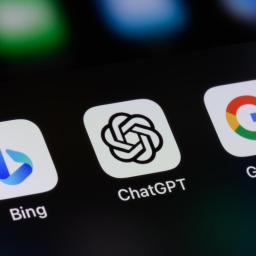 |
by Mariella Moon on (#6HTTN)
Just a few days ago, OpenAI's usage policies page explicitly states that the company prohibits the use of its technology for "military and warfare" purposes. That line has since been deleted. As first noticed by The Intercept, the company updated the page on January 10 "to be clearer and provide more service-specific guidance," as the changelog states. It still prohibits the use of its large language models (LLMs) for anything that can cause harm, and it warns people against using its services to "develop or use weapons." However, the company has removed language pertaining to "military and warfare."While we've yet to see its real-life implications, this change in wording comes just as military agencies around the world are showing an interest in using AI. "Given the use of AI systems in the targeting of civilians in Gaza, it's a notable moment to make the decision to remove the words military and warfare' from OpenAI's permissible use policy," Sarah Myers West, a managing director of the AI Now Institute, told the publication.The explicit mention of "military and warfare" in the list of prohibited uses indicated that OpenAI couldn't work with government agencies like the Department of Defense, which typically offers lucrative deals to contractors. At the moment, the company doesn't have a product that could directly kill or cause physical harm to anybody. But as The Intercept said, its technology could be used for tasks like writing code and processing procurement orders for things that could be used to kill people.When asked about the change in its policy wording, OpenAI spokesperson Niko Felix told the publication that the company "aimed to create a set of universal principles that are both easy to remember and apply, especially as our tools are now globally used by everyday users who can now also build GPTs." Felix explained that "a principle like Don't harm others' is broad yet easily grasped and relevant in numerous contexts," adding that OpenAI "specifically cited weapons and injury to others as clear examples." However, the spokesperson reportedly declined to clarify whether prohibiting the use of its technology to "harm" others included all types of military use outside of weapons development.In a statement to Engadget, an OpenAI spokesperson said, "Our policy does not allow our tools to be used to harm people, develop weapons, for communications surveillance, or to injure others or destroy property. There are, however, national security use cases that align with our mission. For example, we are already working with DARPA to spur the creation of new cybersecurity tools to secure open source software that critical infrastructure and industry depend on. It was not clear whether these beneficial use cases would have been allowed under military" in our previous policies. So the goal with our policy update is to provide clarity and the ability to have these discussions."Update, January 14 2024, 10:22AM ET: This story has been updated to include a statement from OpenAI.This article originally appeared on Engadget at https://www.engadget.com/openais-policy-no-longer-explicitly-bans-the-use-of-its-technology-for-military-and-warfare-123018659.html?src=rss
|
 |
by Sam Rutherford on (#6HTHQ)
At CES 2024, ASUS seems to have taken people by surprise with the announcement of its AirVision M1 glasses, with some viewing it as an alternative to Apple's Vision Pro headset. But I discovered that ASUS' glasses are much more of a novel alternative to portable monitors than something meant for spatial computing.
|
 |
by Karissa Bell on (#6HTHR)
Artifact, the buzzy news app from Instagram co-founders Kevin Systrom and Mike Krieger, is shutting down less than a year after its launch. In a note on Medium, Systrom said the app's core news reading" features would be online through the end of February, but that it would remove commenting and posting abilities immediately.Besides its famous founding team, the app was known for AI-centric features as well as Reddit-like commenting and posting abilities. The app had won praise from journalists who appreciated reporter-friendly features like dedicated author pages and had been featured prominently in Apple and Google's app stores.But after a year of work, it seems Systrom and Krieger encountered many of the same struggles as founders of buzzy news apps before them. We have built something that a core group of users love, but we have concluded that the market opportunity isn't big enough to warrant continued investment in this way," Systrom wrote.While he didn't say what he might do next, Systrom's note hinted that he may at some point take on a new AI-focused project. I am personally excited to continue building new things, though only time will tell what that might be," he wrote. We live in an exciting time where artificial intelligence is changing just about everything we touch, and the opportunities for new ideas seem limitless."In the meantime, Artifact fans have a few more weeks to keep checking headlines before the app goes offline for good.This article originally appeared on Engadget at https://www.engadget.com/instagrams-founders-are-shutting-down-artifact-their-year-old-news-app-233431390.html?src=rss
|
 |
by Malak Saleh on (#6HTF4)
Researchers at MIT's CSAIL division, which focuses on computer engineering and AI development, built two machine learning algorithms that can detect pancreatic cancer at a higher threshold than current diagnostic standards. The two models together formed to create the PRISM" neural network. It is designed to specifically detect pancreatic ductal adenocarcinoma (PDAC), the most prevalent form of pancreatic cancer.The current standard PDAC screening criteria catches about 10 percent of cases in patients examined by professionals. In comparison, MIT's PRISM was able to identify PDAC cases 35 percent of the time.While using AI in the field of diagnostics is not an entirely new feat, MIT's PRISM stands out because of how it was developed. The neural network was programmed based on access to diverse sets of real electronic health records from health institutions across the US. It was fed the data of over 5 million patient's electronic health records, which researchers from the team said surpassed the scale" of information fed to an AI model in this particular area of research. The model uses routine clinical and lab data to make its predictions, and the diversity of the US population is a significant advancement over other PDAC models, which are usually confined to specific geographic regions like a few healthcare centers in the US," Kai Jia, MIT CSAIL PhD senior author of the paper said.MIT's PRISM project started over six years ago. The motivation behind developing an algorithm that can detect PDAC early has a lot to do with the fact that most patients get diagnosed in the later stages of the cancer's development - specifically about eighty percent are diagnosed far too late.The AI works by analyzing patient demographics, previous diagnoses, current and previous medications in care plans and lab results. Collectively, the model works to predict the probability of cancer by analyzing electronic health record data in tandem with things like a patient's age and certain risk factors evident in their lifestyle. Still, PRISM is still only able to help diagnose as many patients at the rate the AI can reach the masses. At the moment, the technology is bound to MIT labs and select patients in the US. The logistical challenge of scaling the AI will involve feeding the algorithm more diverse data sets and perhaps even global health profiles to increase accessibility.Nonetheless, this isn't MIT's first stab at developing an AI model that can predict cancer risk. It notably developed a way to train models how to predict the risk of breast cancer among women using mammogram records. In that line of research, MIT experts confirmed, the more diverse the data sets, the better the AI gets at diagnosing cancers across diverse races and populations. The continued development of AI models that can predict cancer probability will not only improve outcomes for patients if malignancy is identified earlier, it will also lessen the workload of overworked medical professionals. The market for AI in diagnostics is so ripe for change that it is piquing the interest of big tech commercial companies like IBM, which attempted to create an AI program that can detect breast cancer a year in advance.This article originally appeared on Engadget at https://www.engadget.com/mit-experts-develop-ai-models-that-can-detect-pancreatic-cancer-early-222505781.html?src=rss
|
 |
by Jessica Conditt on (#6HTF5)
Welcome back to our weekly gaming news roundup.January is a magical time in the video game industry. We've just closed out 12 months of marketing hype and shifting production timelines, and the year ahead is filled with the promises of new titles and fresh hardware. During this special month, we can look at the 2024 release calendar with excitement and optimism, before the delays start rolling in. So, let's get to it - these hearts aren't going to break themselves.This week's storiesArcane season 2 teaserYou watched Arcane, right? The Netflix series set in the League of Legends universe debuted in late 2021 and it was an instant sensation, starring fan-favorite characters like Jinx, Vi and Caitlyn. The next season is set to come out in November and Riot dropped a one-minute teaser for it last Friday. The trailer has Singed experimenting on himself in a dreary laboratory, while a creature that looks like Warwick hangs above, connected to tubes and IVs. It's gonna get dark, kids.If you haven't watched season one of Arcane, do that now.This kid beat TetrisI guess we can all stop playing Tetris. 13-year-old Willis Gibson became the first person to reach the killscreen in the classic NES version of Tetris, 34 years after the game's debut. Gibson caught the moment on camera and honestly, it gives me goosebumps every time I watch it. The competitive Tetris scene has been steadily growing over the past few years, and players are using a new input technique called rolling that allows them to move pieces faster than ever. If you're into this kind of thing, I recommend watching Classic Tetris Monthly on Twitch or YouTube.Promises, promisesBefore we get back into all the award shows and livestreams and media events this year, let's take a look at the video game promises heading into 2024.There's nothing official yet, but it looks like Nintendo is preparing to release the Switch 2 in 2024, seven years after the launch of the original Switch, and right in the middle of the PS5 and Xbox Series X console cycle. According to early reports, the Switch 2 will be an iterative hardware update with slightly more processing power and support for DLSS and raytracing. The big news is that Nintendo has finally joined us in the 21st century, and players should be able to transfer their Switch games to the new console without any roadblocks.Outside of the new Switch, 2024 is all about games. We know how this goes, right - in video games, a release date is really just the first step before a delay, so whatever you're into, prepare for heartbreak over the next 12 months.There are two games I'm confident will actually hit the market on their release dates in 2024, and that's only because they've been in development for years and delayed multiple times already. Ubisoft's open-world pirate simulator Skull and Bones is due out on February 16 for PS5, Xbox and PC, and Final Fantasy VII Rebirth will hit PS5 on February 29. Rebirth looks legit, while Skull and Bones ... doesn't.Overall, we have a healthy lineup of titles to get excited about in 2024. First, on the mainstream front:
|
 |
by Malak Saleh on (#6HTF6)
NASA's X-59 Quesst supersonic commercial jet, which is being developed by Lockheed Martin, will have its flight test livestreamed as a demonstration of how quiet it can be in the air. The $247.5 million Quesst, whose name is short for Quiet SuperSonic Tech, will be shown on the livestream dramatically emerging from Lockheed Martin's Skunk Works facility in Palmdale, California. NASA has been on a mission since 2018 to prove that its X-59 can fly over cities without producing noise pollution, or sonic booms. This test flight marks an important milestone in the six-year-old project.The first flight will be streamed on January 12 at 4pm ET on YouTube, as well as the NASA app and the NASA+ streaming service.The space agency said it will survey people about the noises they hear from the jet during the first flight. It did not specify how it would find these people, or many people it would poll. The data collected will be sent to regulators and used to help propose new rules that limit the use of supersonic jets. The US federal government has blocked all civilian supersonic jets from flying over land for over five decades.When NASA first announced its quiet supersonic technology project in 2018, administrator Jim Bridenstine said, This aircraft has the potential to transform aviation in the United States." While the jet was supposed to first take flight in 2021, the debut today still marks a major milestone in the QueSST mission. By 2027, NASA expects to have more definitive results about how effective the new aircraft technology is at reducing flight noise.If new laws are eventually passed that permit supersonic jet aircrafts to fly in close proximity to land, high-speed commercial flights could become a reality. Once NASA and Lockheed Martin finalize development of the aircraft, the agency said it will conduct safety evaluations for about nine months. After enough evidence is shared to prove that the Quesst aircraft can be flown safely, NASA plans to expand its flight tests to cities across the US and collect more information about the noise it produces through additional surveys.This article originally appeared on Engadget at https://www.engadget.com/nasas-new-x-59-plane-could-hit-supersonic-speeds-with-minimal-sonic-boom-210037676.html?src=rss
|
 |
by Malak Saleh on (#6HTF7)
The Environmental Protection Agency has scrapped a plan to phase out mammal testing for studying chemical toxicity, Science reports. In 2019, the regulatory agency vowed to completely phase out animal testing for toxicology studies by 2035 in favor of non-animal test subjects" programmed into computer models.The call to challenge the status quo was controversial from the start - it not only was going to impact thousands of studies and experiments, but many scientists argued that computer models were nowhere near ready to replace animals as test subjects. In a letter written by a group of public health officials, the experts urged the EPA's head Michael Regan to reconsider the ban because computational models, in their opinion, were not yet developed to the point" where they could be relied on for risk assessments.In order for the new ban to have taken effect, the EPA said there needed to be scientific confidence" that non-animal models could soundly replace critters like mice and rabbits in labs. Despite the 2035 deadline being put on ice, however, an EPA spokesperson told Science that it would still explore alternatives to animal testing.The ambitious plan is not entirely a lost cause, though. While the EPA hasn't made any official statements about how it plans to work toward its original goal, now without a deadline, some studies have shown promise that computational models might effectively reflect the toxicology of certain chemicals during testing. In some instances, these studies suggest, they can even outperform lab rats.3D developments like technical organoids are also popping up on the research front by way of stem cells that allow duped livers to be tested and evaluated during research as a human liver would. Labs are currently working on ways to more effectively develop realistic organs using 3D printers. But it might be a while before 3D printing can consistently be used to assist biologists and pharmacologists for research and drug testing.This article originally appeared on Engadget at https://www.engadget.com/epa-scraps-plan-that-would-have-had-it-ban-mammal-testing-in-favor-of-computer-models-204540435.html?src=rss
|
 |
by Karissa Bell on (#6HTCN)
Another lawmaker is pushing the Securities and Exchange Commission for more information about its security practices following the hack of its verified account on X. In a new letter to the agency's Inspector general, Senator Ron Wyden, called for an investigation into the SEC's apparent failure to follow cybersecurity best practices."The letter, which was first reported by Axios, comes days after the SEC's official X account was taken over in order to post a tweet claiming that spot bitcoin ETFs had been approved by the regulator. The rogue post temporarily juiced the price of bitcoin and forced SEC chair Gary Gensler to chime in from his X account that the approval had not, in fact, happened. (The SEC did approve 11 spot bitcoin ETFs a day later, with Gensler saying in a statement that bitcoin is primarily a speculative, volatile asset that's also used for illicit activity.")The incident has raised a number of questions about the SEC's security practices after officials at X said the financial regulator had not been using multi-factor authentication to secure its account. In the letter, Wyden, who chairs the Senate's finance committee, said it would be "inexcusable" for the agency to not use additional layers of security to lock down its social media accounts.Given the obvious potential for market manipulation, if X's statement is correct, the SEC's social media accounts should have been secured using industry best practices," Wyden wrote. Not only should the agency have enabled MFA, but it should have secured its accounts with phishing-resistant hardware tokens, commonly known as security keys, which are the gold standard for account cybersecurity. The SEC's failure to follow cybersecurity best practices is inexcusable, particularly given the agency's new requirements for cybersecurity disclosure"Wyden isn't the only lawmaker who has pushed the SEC for more details about the hack. Senators J. D. Vance and Thom Tillis sent a letter of their own, addressed to Gensler, immediately following the incident. They asked for a briefing about the agency's security policies and investigation into the hack by January 23.The SEC didn't immediately respond to a request for comment. The agency said in an earlier statement that it was working with the FBI and the Inspector General to investigate the matter.This article originally appeared on Engadget at https://www.engadget.com/senators-want-to-know-why-the-secs-x-account-wasnt-secured-with-mfa-203614701.html?src=rss
|
 |
by Kris Holt on (#6HTCP)
New year, new... desktop setup? If you're looking for ways to spruce up your desk space without breaking the bank, it's worth taking a peek at a Logitech sale on Amazon that includes discounts on mice, webcams and other accessories. Most of us could do with a webcam upgrade (I know I could given the low-res one built into my laptop), and Logitech's Bio 300 may fit the bill. It's a Full HD 1080p webcam that's on sale for $44.85. That's a 25 percent discount, or just over $15 off the usual price of $60.The Bio 300 has a privacy shutter, 70-degree field of view, auto-light correction function, LED activity light, built-in mono noise reducing microphone and USB-C connector. You'll be able to use the Logi Tune app to adjust color and image quality. Those concerned with sustainability may be pleased to learn it's made with 48 percent post-consumer recycled plastic too. The slightly speckled plastics help give the webcam a fresh look.One other product that caught our eye in the sale is the Pebble 2 M350s mouse. That's on sale for $25, which marks a record low. The wireless mouse usually costs $30. The Pebble 2 is available in black, white or a fetching rose to match the aforementioned webcam. It too is built with at least 58 percent certified post-consumer recycled plastic.This low-profile mouse has quiet clicking sounds and is highly portable, making it a good fit for those who move around with their laptops. It supports Bluetooth 5.1 and the Logitech Bolt receiver, and it's able to pair with up to three devices (you can switch between them using a button on the base). The middle button is customizable and supports shortcuts. Logitech says the Pebble 2 M350s will run for up to two years before you have to change the battery.Follow @EngadgetDeals on Twitter and subscribe to the Engadget Deals newsletter for the latest tech deals and buying advice.This article originally appeared on Engadget at https://www.engadget.com/logitech-mice-webcams-and-accessories-are-up-to-25-percent-off-at-amazon-201429217.html?src=rss
|
 |
by Cherlynn Low on (#6HTCQ)
Audio cues can sometimes be crucial for success in games. Developers frequently design the sound environment for their experiences to be not only rich and immersive, but to also contain hints about approaching enemies or danger. Players who are hard of hearing can miss out on this, and it's not fair for them to be disadvantaged due to a disability. A product called Audio Radar launched at CES 2024 and it can help turn sound signals into visual cues, so that gamers with hearing loss can "see the sound," according to the company AirDrop Gaming LLC.The setup is fairly simple. A box plugs into a gaming console to interpret audio output and converts that data into lights. A series of RGB light bars surround the screen, and display different colors depending on the type of sound coming from the respective direction they represent. Put simply, it means that if you're walking around a Minecraft world, like I did at the company's booth on the show floor, you'll see lights of different colors appear on the different bars.Red lights mean sounds from enemies are in the area adjacent to the corresponding light, while green is for neutral sounds. An onscreen legend also explains what the sounds mean, though that might just be for the modded Minecraft scenario on display at CES.Photo by Cherlynn Low / EngadgetI walked around the scene briefly, and could see green lights hovering above a pen of farm animals, while purple lights fluttered in tandem with a dragon flying overhead. I did find it a little confusing, but that is probably due more to the fact that I know very little about Minecraft, and as someone with hearing I might not appreciate the added information as much as someone without.With an SDK that the company launched at the show, developers will be able to customize the lights and visual feedback to elements in their game so that they have control over what their hard-of-hearing gamers see. In the meantime, Audio Radar is using its own software to detect stereo or surround sound signals to convert to feedback in lights and colors.Though the product may seem in its early stages, various major gaming companies have appeared to indicate interest in Audio Radar. AirDrop Gaming's CEO Tim Murphy told me that Logitech is "providing support as we further develop our product and design our go-to-market strategy." Also, Microsoft CEO Satya Nadella was spotted at the booth on opening day.Audio Radar is beginning to ship on a wider level this year, and the company continues to develop products for gamers who are deaf and hard of hearing, among other things. The system works with Xbox, PlayStation and PC.We're reporting live from CES 2024 in Las Vegas from January 6-12. Keep up with all the latest news from the show here.This article originally appeared on Engadget at https://www.engadget.com/audio-radar-helps-gamers-with-hearing-loss-see-sound-effects-instead-195001226.html?src=rss
|
 |
by Lawrence Bonk on (#6HTCR)
Want some bad news as a lead up to the weekend? NASA just released its annual global temperature report and, lo and behold, 2023 was the hottest year on record since measurements began back in 1880. Global temperatures last year were approximately 2.1 degrees Fahrenheit (1.2 degrees Celsius) above the average for NASA's baseline period of 1951 to 1980.Compared to the 1880s, the planet was 2.5 degrees warmer in 2023. If you do the math, you'll find that the vast majority of that increase occurred after NASA's baseline period. In other words, the past several decades have been the worst of the worst. July of 2023 was the hottest month ever measured, which is a record nobody wanted or asked for but, well, here we are.NASA and NOAA's global temperature report confirms what billions of people around the world experienced last year; we are facing a climate crisis," said NASA Administrator Bill Nelson. From extreme heat, to wildfires, to rising sea levels, we can see our Earth is changing."NASA's not burying its head in the sand and pretending this is a natural phenomenon. We did this, with Gavin Schmidt, director at the Goddard Institute for Space Studies (GISS), saying the temperature shift was primarily caused by our fossil fuel emissions."2023 was not an outlier. The past ten consecutive years have been the warmest on record. To that end, the U.S. National Oceanic and Atmospheric Administration (NOAA) recently reported that 2024 has a one-in-three chance of being even hotter. Yay.It's also worth noting that 2023 featured some cooling events that actually worked to lower temperatures a bit, including volcanic aerosols in the atmosphere due to the January 2022 eruption of the Hunga Tonga-Hunga Ha'apai underwater volcano. However, these events couldn't keep up with constant greenhouse gas emissions and the heating effects of this year's El Nino weather event.We will continue to break records as long as greenhouse gas emissions keep going up," Schmidt said. And, unfortunately, we just set a new record for greenhouse gas emissions again this past year."The Biden-Harris administration has done a few things to try to slow down our transformation into a Mad Max dystopia. The White House recently launched the U.S. Greenhouse Gas Center to make critical climate data readily available and last year's Inflation Reduction Act set aside $369 billion for climate and clean energy programs. President Biden has also pledged to bring emission levels to at least 50 percent below what we experienced in 2005 by 2025. These are good incremental moves, of that there's no doubt, but we seem to have sped past f*ck around" and are careening wildly into find out." What was that curse again? Oh yeah. May you live in interesting times.This article originally appeared on Engadget at https://www.engadget.com/nasa-confirms-2023-was-the-hottest-year-on-record-193626460.html?src=rss
|
 |
by Richard Lai on (#6HT9P)
One of the missing pieces of puzzle for VR is scent, but at CES 2024 in Las Vegas, Japanese startup Aromajoin showed off a wearable that may be up to the task. Simply dubbed Aroma Shooter Wearable, this neckband houses six replaceable scent cartridges, and it's controlled by a mobile device or PC over Bluetooth, Wi-Fi or USB. The product is still in its early days, and the Kyoto-based company is targeting developers and business clients, who can pick from a library of "hundreds" of scents - or even custom scents from, say, fragrance brands - to suit their needs.In Aromajoin's demo, a video player app was programmed to cycle through those six scents - lavender, blueberry, shampoo, caramel, smoke and fresh cut grass - to match the six scenes in the short clip. Even though I was watching what was otherwise a regular video on an iPad, the scent definitely boosted the immersion, and I can imagine this making an even bigger impact when paired with VR.Photo by Richard Lai / EngadgetFor the purpose of CES, Aromajoin only had one demo on hand, but the app did show how one could program any video clip to trigger certain cartridges - yes, you can have multiple scents at any instance - at certain times. You can also adjust the intensity of each scent, which came in handy as I found the grass smell to be a bit too strong at first. As for the neckband itself, it weighs around 300 grams, but I didn't feel much burden thanks to its ergonomic shape around my collarbone area.Aromajoin plans to launch its Aroma Shooter Wearable via crowdfunding this May, with shipment expected by the end of this year. Target price for the device is around $350, with each scent cartridge likely to cost around $30. Each cartridge should last for around 3,000 shots or up to three months, though this depends on the intensity and the nature of each mixture.Photo by Richard Lai / EngadgetAromajoin also applied the same video demo to a larger setup dubbed Aroma Speaker 60, which is aimed at retailers, cinemas and VR arcades. As the model name implies, this pair of tower can be equipped with up to 60 scents, with each of the 10 magazines housing six scents, thus supporting a wider range of scenes or use cases. The Aroma Speaker 60 will also be launched via crowdfunding, but expect it to cost a lot more than its neckband counterpart.We're reporting live from CES 2024 in Las Vegas from January 6-12. Keep up with all the latest news from the show here.This article originally appeared on Engadget at https://www.engadget.com/the-aroma-shooter-wearable-blasts-scents-while-you-watch-videos-180006793.html?src=rss
|
 |
by Will Shanklin on (#6HT9Q)
The US government has reportedly approved AI-based memory loss prediction software for the first time. Darmiyan, a San Francisco-based brain imaging analytics company, says the FDA has granted De Novo approval for its product BrainSee. The software platform assigns an objective score that predicts the likelihood of progression from aMCI to Alzheimer's dementia within 5 years," according to the medical company. Fierce Biotech first reported the announcement.Darmiyan says BrainSee can predict memory loss progression using clinical brain MRIs and cognitive tests, which are already standard for patients worried about early signs of decline. After the program analyzes the imaging and cognitive assessments, it assigns a predictive score indicating the patient's odds of memory deterioration within the following five years. At least in theory, that would lead to early treatment for some and peace of mind for others.This shifts the patient experience from prolonged anxiety to proactive management, which is crucial in an era of emerging Alzheimer's treatments where accurate prognosis can help determine suitable treatment candidates," Darmiyan wrote in a press release announcing the FDA approval. The economic impact of BrainSee will be significant for all stakeholders in healthcare, promising to reduce the billions of dollars annually spent on Alzheimer's care, through more effective management and treatment."The FDA's De Novo" designation means the product has no clear market predecessors but has proven its effectiveness and safety in clinical trials. BrainSee first received FDA breakthrough" designation in 2021, an earlier stage of the approval path for a first-of-its-kind treatment.Darmiyan says BrainSee is fully automated and provides results on the same day the scans and cognitive test scores are entered. The company views the tech as shifting the treatment of mild / early cognitive decline from biomarker-based methods to non-invasive and actionable forecasts of future improvement or progression."This article originally appeared on Engadget at https://www.engadget.com/the-fda-has-reportedly-approved-an-ai-product-that-predicts-cognitive-decline-184534034.html?src=rss
|
 |
by Lawrence Bonk on (#6HT9R)
Bandai Namco's Sand Land finally has a release date of April 26. This is a video game adaptation of a classic manga by artist Akira Toriyama. That's the same Akira Toriyama who created Dragon Ball, and also created the character designs for Chrono Trigger and many entries in the Dragon Quest series.Sand Land is a manga dating back to the mystical year of 2000 and it follows the adventures of the literal Devil's son, Beelzebub, as he explores a desert world accompanied by a human sheriff and a demon thief. Interestingly, the game seems like a beat-for-beat recreation of the anime, only in the form of a fast-paced action RPG.There's also a heavy emphasis on vehicle customization in the game, as the desert is vast and requires diverse transportation methods. This allows you to fuse different weaponry and components to improve performance or offer unique tactical advantages. However, your first vehicle will be a bare-bones golf cart, another nod to the source material.Sand Land releases for PlayStation 5, PlayStation 4, Xbox Series X|S and PC, with pre-orders available now. There's a number of different versions available for collectors. The Standard Edition includes just the base game, while the Deluxe Edition comes with various digital add-ons, along with decals. The Collector's Edition comes with everything listed above, plus postcards and Steelbook packaging.This article originally appeared on Engadget at https://www.engadget.com/sand-land-a-game-adaptation-of-akira-toriyamas-manga-drops-on-april-26-184008528.html?src=rss
|
 |
by Richard Lai on (#6HT9S)
It's been a while since we saw over-the-air wireless charging demos from the likes of Oppo and Xiaomi, so CES 2024 caught us by surprise when we came across a new one from another Chinese mobile brand, Infinix. This "AirCharge" tech uses low-frequency magnetic resonance to deliver up to 25W of power wirelessly, and this works across a distance of up to 20cm (7.87 inches) - doubling that of Oppo's previous demo - and at angles of up to 60 degrees.Infinix believes that this use case is ideal for users who want to keep their phones charged while gaming or watching videos, without having a cable getting in the way of either hand. With this improved charging distance, you can also install the AirCharge pad to underneath a table, and then you'll have yourself a stealthy charging area. Before that, though, Infinix will need to figure out a way to avoid accidentally heating up metallic objects nearby. There are foreign object detection methods for existing "2D" wireless charging solutions, but it's more complex when the charging space goes from "2D" to "3D."Another safety measure to keep in mind is for the case of a sudden drop in distance between the phone and the charging pad - it's not good to abruptly crank up the voltage on a device like that. As such, Infinix has already implemented (and patented) an over-voltage protection circuit on both ends of the chain. The company doesn't have a time frame for launching AirCharge on a mass production device just yet, but it hopes to eventually use this tech to push for an industrial standard on over-the-air wireless charging.Photo by Richard Lai / EngadgetInfinix also showed off its "E-Color Shift Technology," which uses E Ink's Prism 3 to let you change the color patterns on the back of your phone. This feature supports eight basic colors, which are then expanded by multiple levels of shades, and this can be implemented onto a pattern with over 100 customizable areas. As is the case with conventional E Ink displays, once this Prism 3 panel has been refreshed, the new color pattern remains without consuming power.Once the company figures out how to tackle the challenges related to thermal performance and thickness, it hopes to bring this funky feature to consumer devices within a year or two. By which point, you'll be able to customize the color pattern through an app - which we didn't get to see, as our demo used dummy phones instead. Even Lenovo is considering this display tech for decorating its laptop lids.Last but not least, Infinix teased its "Extreme-Temp Battery" tech for users who have to brave the cold. While conventional lithium ion batteries will have their capacities drastically reduced or even get damaged in low temperatures, Infinix's solid state battery will continue to operate even at a temperature as low as -40C or -40F. Similarly, when measured at -20C or -4F, Infinix's solution will apparently have a 50- to 300-percent boost in endurance time compared to others. We may see this battery tech on an Infinix phone as soon as the second half of 2025.We're reporting live from CES 2024 in Las Vegas from January 6-12. Keep up with all the latest news from the show here.This article originally appeared on Engadget at https://www.engadget.com/infinix-brought-wireless-charging-tech-to-ces-that-can-juice-up-your-devices-from-eight-inches-away-183059546.html?src=rss
|
 |
by Mat Smith on (#6HT9T)
It's the end of our CES coverage, wrapping up the week with more deep dives from the tech show and introducing our Best of CES 2024 winners.This year, rather than award specific category prizes, possibly in categories lacking competition (or anything good enough), we've announced a group of winners across multiple categories. We still attempted to see as many products and devices as possible, whether it was laptops, mobile devices and smart home gear or cars and accessibility innovations.You should check out the full slate of winners, but our Best of Show went to GE Profile's Smart Indoor Smoker. I know: CES is more typically a TV show or car show, but sometimes it's niche products that win us over.GE ProfileThe Smart Indoor Smoker is a countertop device that makes proper barbecue in your kitchen without filling your home with smoke. It moves air around the food to impart maximum smokiness, without letting airflow out. When your brisket, chicken or whatever is done, a filtration and catalyst system draws the smoke down, eventually expelling it as warm air. It's not small, but it's stylish and simple to use, with a low barrier to entry for anyone tempted to try smoking their own food. The device could also impart an impressive level of smokiness in only a few hours.Make sure you check out all the winners right here. Expect a few more stories from the team today and over the weekend, but for me, it's time to leave Las Vegas. Until next year!- Mat SmithYou can get these reports delivered daily direct to your inbox. Subscribe right here!The biggest stories you might have missedCES 2024: The Pebble Flow is an all-electric trailer for the EV ageApple Vision Pro pre-orders require a FaceID scan with an iPhone or iPadFormula E 2024 previewThe year of the passkey is still far awayEngadget Podcast: AI steals the show at CES 2024The weirdest tech and gadgets at CES 2024They can't all be winners.EngadgetA little secret: I love the strange gadgets, services and concepts we unearth at CES, more so than all the premium TVs, car tech and beefed-up laptops. There are thousands of exhibitors peddling their wares, trying to find a market for things no one has dreamed up before. Here are a few favorites from CES 2024. Weird doesn't mean bad. It just means weird.Continue reading.Touring LG's high-tech camping trailer at CES 2024LG's greatest hits, vacuum packed into a trailer.EngadgetThe LG Bon Voyage concept trailer packs so many of LG's CES greatest hits, retooled and restyled for near-future camping that's both incredibly comfortable and... unlikely. LG Labs' inexplicable capsule coffee machine, the Duobo, which looks like a moon lander, nestles inside the trailer, alongside a microwave. The fridge, however, you get into from the outside. A pull-out table, on the other side of the door, has a built-in inductive burner. There's a giant OLED screen above another pull-out surface, and at the rear of the trailer, there's a portable karaoke set, with two wireless mics and a speaker. Oh, and cocktail accouterments on either side. Do I have to repeat myself? Glamping.Continue reading.It's a great time to buy a solar generatorCES 2024 showed how the tech is finally getting there.This year's CES has shown that the solar power industry has moved beyond its old limitations. Cost for solar panels and batteries has fallen dramatically in the last few years, making it an easier sell.The new EcoFlow Delta Pro Ultra, the company's flagship whole-home backup, can pump out 7,200W. The company claims the unit is strong enough to power a three-ton central air unit, one of the most demanding appliances in the home. Plus, because it's modular, you can add up to three units to the same home for a cumulative output of 21.6kW - and, with enough batteries, a total storage capacity of 90kWh.Solix, Anker's big battery division, showed off its new F3800 portable power station, which can pump out a peak of 6,000W - enough to juice an EV.Continue reading.This article originally appeared on Engadget at https://www.engadget.com/the-morning-after-introducing-the-best-of-ces-2024-182306415.html?src=rss
|
 |
by Kris Holt on (#6HT9V)
It's once again that time of year when a bunch of dedicated gamers gather in a conference room to play through their favorite titles as quickly as possible in the name of charity. This year's Awesome Games Done Quick (AGDQ) speedrunning marathon starts on Sunday, January 14. The week-long event is slated to last until the early hours of January 21. You can watch it live below and catch up on any runs you missed over on the Games Done Quick (GDQ) YouTube channel.The event will kick off with a sprint through Tunic(maybe don't tune in for that one if you haven't yet played and don't want to be spoiled on the secrets). It will close out with a speedrun of Final Fantasy V Pixel Remaster. In between, you'll get to see runners push classics like Donkey Kong Country, Batman: Arkham City and Hadesto their limits. Several big games from last year will be making their first appearance at AGDQ, including Super Mario Bros. Wonder, Cocoon, Pikmin 4, Armored Core VI: Fires of Rubicon, Viewfinder and Baldur's Gate 3.I'm particularly looking forward to a glitch showcase of Super Mario Maker 2 and finding out the latest The Legend of Zelda: Tears of the Kingdomstrats (people are beating that mammoth game in under an hour!). There's one run in particular that looks to be unmissable: a dog-assisted sprint through Gyromite, in which a Shina Ibu named Peanut Butter will help his owner beat the NES game.AGDQ is once again raising funds for Prevent Cancer Foundation. Over $2.6 million was raised for the cause at last year's AGDQ, and organizers will surely be hoping to best that total in 2024. You can donate through the GDQ website.This article originally appeared on Engadget at https://www.engadget.com/how-to-watch-the-awesome-games-done-quick-2024-speedrun-marathon-181538649.html?src=rss
|
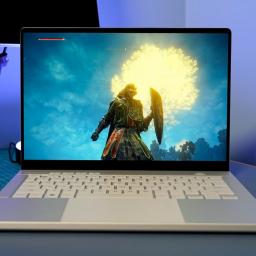 |
by Devindra Hardawar on (#6HT9W)
Call it love at first sight. Every year, I come across a handful of products that elicit instant joy, a sense of elation that's so strong I forget about the many ways the tech industry is actively making our world worse. As we wrap up CES 2024 in Las Vegas, I can't stop thinking about the new ASUS ROG Zephyrus G14, the latest edition of one of our favorite gaming laptops.As we covered in our initial hands-on, the Zephyrus G14 features the spec bumps you'd expect: new Ryzen 8000 CPUs and the return of NVIDIA's RTX 4070. But really, it's the all aluminum case and minimalist aesthetic that I've fallen for. When I touched it for the first time, it felt like I was holding a piece of high-grade scientific equipment. The case feels almost too good for a gaming laptop.Couple that with the cleanest layout ever on an ASUS machine, and you have an evolutionary design leap for the company. (It's particularly shocking seeing it next to the new ASUS ZenBook 14 OLED, which looks practically ancient in comparison.) We've called Razer's Blade laptops the gaming equivalent of Apple's MacBook Pro for years - but now the torch may have been passed to ASUS. The Zephyrus G14 more closely resembles the boxier refreshed aesthetic from Apple's Pro machines. (If you're looking for an even bigger screen, there's also a new G16 with the same design and it can hold more powerful hardware, like NVIDIA's RTX 4090.)The G14 is more than just a design showpiece, it's also a far better gaming laptop than before. Its new keyboard, which sports 12 percent larger key caps, makes hours-long Halo Infinite matches feel far more comfortable since there's more room for my fingers to spread out. Just about everything shines on its new 3K 120Hz OLED screen, which makes colors pop perfectly. And I was even able to hear a decent amount of positional audio from its revamped speakers (20 percent larger than before) when I was too lazy to grab a pair of headphones.Devindra Hardawar/EngadgetWhile I can't divulge any benchmarks from our RTX 4070-equipped preview unit, I can say that Halo Infinite, Cyberpunk 2077, Elden Ring and the new uber-stylish Metroidvania Cookie Cutter all played like a dream at the G14's native resolution with maxed out graphics quality. Cookie Cutter, with its fluid and expressive art style, was practically made to be shown off on OLED screens. And in Cyberpunk, the G14's HDR capability made the neon lights in Night City almost searingly bright.The Zephyrus G14 also excelled at game streaming, something I like to test to stress a laptop's networking capabilities. I was able to hop into Forza Horizon 5 in around 30 seconds while I was sitting 20 feet and a floor away from my router. And once I hit the road, I was able to zoom through a few races without any noticeable video artifacts, tearing or slowdown. Anyone walking by might think I was playing the game locally.Devindra Hardawar/EngadgetBeyond gaming, the G14 just kept surprising and delighting me. Its larger keyboard feels great for typing, with more depth and responsiveness than before. Its touchpad is one of the smoothest I've used on a Windows laptop. And I can't help but love that it has all the ports I want: HDMI, mini-SD and both USB-C and Type A on both sides of the case. I was less enamored with ASUS' new power connector - it's a bit stiff, and a slight tug could easily send the G14 flying. It would have been nice to see a pure USB-C charging solution, but the company told our senior reporter Sam Rutherford that the cost and efficiency of using that port for high-powered charging still isn't good enough for wide deployment.I'm looking forward to spending more time with the ROG Zephyrus G14 during our review. But until then, we'll always have CES 2024.We're reporting live from CES 2024 in Las Vegas from January 6-12. Keep up with all the latest news from the show here.This article originally appeared on Engadget at https://www.engadget.com/asus-rog-zephyrus-g14-preview-180025962.html?src=rss
|
by Lawrence Bonk on (#6HT9X)
CES 2024 in Las Vegas had all kinds of tech, from attention-grabbing AI gadgets to, uh, whatever this is. There were also a whole bunch of laptops. Like, an endless array of laptops. So many laptops, in fact, that we had a real tough time deciding between them to choose our best of CES award winners. These weren't just any laptops with minor spec bumps. The theme of the year was, of course, AI, with many computers adopting dedicated AI chips. OLED displays with speedy refresh rates were also all over the show floor and, of course, there were several unique designs that just about defy description. We've gone through them all and come up with a list of the best laptops at CES.ASUS Zenbook DuoSam Rutherford/EngadgetThe dream of a dual-screen laptop isn't dead! The ASUS Zenbook Duo is a technical marvel, with a dual-screen display and a detachable Bluetooth keyboard. In other words, you can use it in a traditional clamshell mode, with a keyboard in front of one of the displays, or you can balance the screens on top of one another. This is great for those who want the convenience of a laptop, but with added screen real estate.The aesthetics are on point and the Duo includes high-end hardware like Intel's Core Ultra chips and gorgeous OLED screens. The price is also fairly reasonable, given the tech, as this laptop starts at $1,500.ASUS ROG Zephyrus G14 and G16Sam Rutherford/EngadgetASUS strikes again. The ROG Zephyrus G14 and G16 line has gotten a full redesign, with an attractive aluminum chassis and plenty of power underneath the hood. These laptops can run just about any AAA game on the market, thanks to its AMD Ryzen 8000 series processors and the optional NVIDIA RTX 4070 GPU at the high end.We called it a grown up" and sophisticated" gaming laptop because, well, that's what it is. It's incredibly sleek and would feel at home in an office and in a basement-turned-gaming-paradise. It's also lighter than previous generations, making it more portable. Each model ships with a simple LED slash across the front that can be programmed to glow in gray or white, instead of the typical Skittles rainbow of colors found with most gaming laptops. There's no pricing on these yet.HP Omen Transcend 14Sam Rutherford/EngadgetThere's a new record-breaker in town. The HP Open Transcend 14 is the lightest 14-inch gaming laptop in the world, weighing just 3.5 pounds. Even cooler? HP seems to have hit this milestone without cutting too many corners. Despite being closer in size and weight to an ultraportable than an average gaming laptop, you still get support for the 14th-gen Intel Core Ultra 7 or Ultra 9 processor, up to 32GB of DDR5 RAM, 2TB of storage and an RTX 4070 GPU. This thing won't struggle to play modern games.Despite the teeny-tiny dimensions, you still get two USB-A and two USB-C ports (one of which supports Thunderbolt 4) plus a full-size HDMI 2.1 jack on the back. You'll also have the option to upgrade to Wi-Fi 7 card with Bluetooth 5.4. This laptop starts at $1,600 and goes on sale later this year.Dell's new XPS lineDevindra Hardawar/EngadgetDell has upgraded its entire XPS line, with form factors that resemble last year's XPS 13 Plus. The redesign covers the new XPS 13, 14 and 16, and there's no longer a Plus line. Each of these laptops boasts a glass wrist wrest that hides an invisible haptic touchpad. There's also touch-sensitive function buttons above the keyboard and large key caps for comfortable typing.The XPS line includes Intel's Core Ultra chips, which feature NPUs for AI tasks. The ports are on point, with the XPS 14 and 16 boasting a headphone jack, three Thunderbolt 4 USB-C slots and a microSD card reader. The minimalist design here is gorgeous and these laptops nearly made our best of CES list, but not quite. Once these are out in the wild, however, they could wind up on our list of the best laptops in 2024, just like the XPS 13 Plus.Lenovo ThinkBook Plus Gen 5Sam Rutherford/EngadgetWe promised unique and funky designs, and here's one. The Lenovo ThinkBook Plus Gen 5 is a Frankenstein's monster of sorts, with a design that's basically two gadgets smashed together. This is anything but your typical 2-in-1 device. At first glance, the ThinkBook Plus looks like an ordinary clamshell, but the display lifts right off and becomes a 14-inch tablet.Not that big of a deal right? Here's where things get interesting. Once removed, both components remain fully functional. So you can use the tablet as a standalone Android device, a wireless monitor for the laptop base or a Wacom-like inking display via Lenovo's Freestyle app. Meanwhile, you can also use the deck as a mini desktop by plugging in an external screen. Now that's some modular thinking. This thing starts at $2,000, however, which is fairly steep.Everything elseThere were many laptops that just missed this list, but still deserve mention.
 |
by Malak Saleh on (#6HT6S)
Apple sent an email to customers today notifying them that when they pre-order the Vision Pro starting on January 19, they will need to scan their face with an iPhone or iPad using Face ID to make sure they get a precise band fit on the headset. Deliveries will begin when it launches on February 2. US shoppers will be able to purchase the headset on apple.com, in the Apple Store app and in retail Apple Stores.Apple said the latest version of the Apple Store app will be needed for shoppers to conduct a face scan. Additionally, for people that wear glasses, there will be an option to add optical inserts into the headset so that they can be worn without eyewear. To get the inserts for an additional fee, provided by its partner Zeiss, Apple says shoppers will need to share an updated official prescription document when pre-ordering the headset.For those on the fence about purchasing the Vision Pro, which starts around $3,499, Apple said the headset will be available in store for demos on the launch date. The Vision Pro, which was first announced at Apple's WWDC 2023 keynote, received praise for its crisp 3D visuals during a hands-on preview. The headset will provide more than just a VR screen and speaker system for watching films and playing games - it will eventually act as a tool that will connect friends in Horizon Worlds.The option to freely roam around a virtual world with an integrated gaming program made by Meta will push the bounds for what constitutes modern social networking and online gaming. Apple's push for the Vision Pro to be branded and function as a spatial computer will also create endless possibilities for developers to create compelling apps.This article originally appeared on Engadget at https://www.engadget.com/apple-vision-pro-pre-orders-require-a-faceid-scan-with-an-iphone-or-ipad-171544636.html?src=rss
|
 |
by Cherlynn Low on (#6HT6T)
So much of what we see at CES tends to be focused on technological innovation for the sake of innovation, or obvious attempts to tap into whatever trend is gripping the internet's attention that year. In the last few shows, though, there has been a heartening increase in attention to assistive products that are designed to help improve the lives of people with disabilities and other different needs. At CES 2024, I was glad to see more development in the accessibility category, with many offerings appearing to be more thoughtfully designed in addition to being clever. It's so easy to get distracted by the shiny, eye-catching, glamorous and weird tech at CES, but I wanted to take the time to give due attention to some of my favorite accessibility products here in Las Vegas.GyroGloveBefore I even packed my bags, numerous coworkers had sent me the link to GyroGlove's website after it had been recognized as an honoree for several CES Innovation awards. The device is a hand-stabilizing glove that uses gyroscopic force to help those with hand tremors minimize the shakes. Because the demo unit at the show floor was too large for me, and, more importantly, I don't have hand tremors, I couldn't accurately assess the glove's effectiveness.But I spoke with a person with Parkinson's Disease at the booth, who had been wearing one for a few days. She said the GyroGlove helped her perform tasks like buttoning up a shirt more easily, and that she intended to buy one for herself. At $5,899, the device is quite expensive, which is the sad state of assistive products these days. But GyroGlove's makers said they're in talks with some insurance providers in the US, which could lead to it being covered for those in America who could benefit from it. That's one of the biggest reasons that led us to name GyroGlove one of our winners for CES 2024.Photo by Cherlynn Low / EngadgetMouthPadI did not think I'd be looking deep into a person's mouth and up their nose at CES 2024, but here we are. Sometimes you have to do strange things to check out unconventional gadgets. The MouthPad is as unusual as it gets. It's a tongue-operated controller for phones, tablets and laptops, and basically anything that will accept a Bluetooth mouse input. The components include a touchpad mounted onto the palette of what's essentially a retainer, as well as a battery and Bluetooth radio.As odd as the concept sounds, it actually could be a boon for people who aren't able to use their limbs, since your tongue, as a muscle, can offer more precise movement and control than, say, your eyes. If you're feeling apprehensive about sticking a device inside your mouth, it might be helpful to know that the battery is from the same company that's made them for medical-grade implants, while the rest of the dental tray is made from a resin that's commonly used in aligners and bite guards. The product is currently available as an early access package that includes setup and calibration assistance, with a new version (with longer battery life) slated for launch later this year.OrCam HearAssistive tech company OrCam won our Best of CES award for accessibility in 2022, so I was eager to check out what it had in store this year. I wasn't disappointed. The company had a few updated products to show off, but the most intriguing was a new offering for people with hearing loss. The OrCam Hear system is a three-part package consisting of a pair of earbuds, a dongle for your phone and an app. Together, the different parts work to filter out background noise while identifying and isolating specific speakers in a multi-party conversation.At a demo during a noisy event at CES 2024, I watched and listened as the voices of selected people around me became clear or muffled as company reps dragged their icons in or out of my field of hearing. I was especially impressed when the system was able to identify my editor next to me and let me choose to focus on or filter out his voice.Audio RadarIf you're a gamer, you'll know how important audio cues can sometimes be for a successful run. Developers frequently design the sound environment for their games to be not only rich and immersive, but to also contain hints about approaching enemies or danger. Players who are hard of hearing can miss out on this, and it's not fair for them to be disadvantaged due to a disability.A product called Audio Radar can help turn sound signals into visual cues, so that gamers with hearing loss can "see the sound," according to the company. The setup is fairly simple. A box plugs into a gaming console to interpret the audio output and convert it into lights. A series of RGB light bars surround the screen, and display different colors depending on the type of sound coming from the respective direction they represent.CES 2024 saw not just Audio Radar's official launch, but was also where the company introduced its SDK for game developers to create custom visual cues for players who are hard of hearing. The company's founder and CEO Tim Murphy told Engadget that it's partnering with Logitech, with the gaming accessory maker "providing support as we further develop our product and design our go-to-market strategy."Photo by Cherlynn Low / EngadgetTranscribe GlassGoogle Glass was resurrected at CES 2024. Sort of. A new product called Transcribe Glass is a small heads up display you can attach to any frames, and the result looks a lot like the long-dead Google device. It connects to your phone and uses that device's onboard processing to transcribe what it hears, then projects the text onto the tiny transparent display hovering above the eye. You'll be able to resize the font, adjust the scrolling speed and choose your language model of choice, since TranscribeGlass uses third-party APIs for translation. Yes, it converts foreign languages into one you understand, too.The company is targeting year's end for launch, and hoping to offer the device at $199 to start. When I tried it on at the show floor, I was surprised by how light and adjustable the hardware was. I had to squint slightly to see the captions, and was encountering some Bluetooth lag, but otherwise the transcriptions took place fairly quickly and appeared to be accurate. The TranscribeGlass should last about eight hours on a charge, which seems reasonable given all that it's doing.Samsung's subtitle accessibility featuresThough we didn't catch a demo of this in person, Samsung did briefly mention a "sign language feature in Samsung Neo QLED" that "can be easily controlled with gestures for the hearing impaired, and an Audio Subtitle feature [that] turns text subtitles into spoken words in real-time for those with low vision." We weren't able to find this at the show, but the concept is certainly meaningful. Plus, the fact that Samsung TVs have mainstream appeal means these features could be more widely available that most of the niche products we've covered in this roundup.We're reporting live from CES 2024 in Las Vegas from January 6-12. Keep up with all the latest news from the show here.This article originally appeared on Engadget at https://www.engadget.com/our-favorite-accessibility-products-at-ces-2024-170009710.html?src=rss
|
 |
by Amy Skorheim on (#6HT6V)
The big news in tech right now is CES in Las Vegas and our team has been on the ground all week checking out the new products. A surprising amount of what we saw is already available for purchase, but very few of those things are discounted. As for what is on sale, this turned out to be a decent week for deals on current model devices, with some hitting all-time lows. The Google Pixel 8 smartphones are back to Black Friday lows, as is one of our favorite fitness trackers. A set of Tile trackers is cheaper than ever and the Apple Watch Series 9 has returned to $329. Here are the best tech deals from this week that you can still get today.Follow @EngadgetDeals on Twitter and subscribe to the Engadget Deals newsletter for the latest tech deals and buying advice.This article originally appeared on Engadget at https://www.engadget.com/the-apple-watch-series-9-is-back-to-329-plus-the-rest-of-the-weeks-best-tech-deals-164857041.html?src=rss
|
 |
by Billy Steele on (#6HT6W)
The tenth season of the FIA-sanctioned all-electric Formula E racing series goes green this weekend with the opening round in Mexico City on January 13. This will be the second year of the series using the ultra-efficient Gen3 car, and aside from a number of teams swapping out one or both drivers, there aren't any huge changes from last year. However, Formula E's new TV deal should make races easier, and less frustrating, to watch in the US.Formula E, now streaming on Roku and Paramount+After being broadcast in the US on CBS Sports, Formula E announced a new TV deal last June to expand availability of live events to Roku and Paramount+. 11 races will be streamed live exclusively on The Roku Channel for free. There will also be race previews, replays and Formula E's version of Drive To Survive(Unplugged) available to stream on Roku. There's a new post-race highlights show too, called Recharge, to catch you up on any of the action you might've missed. All of the Formula E content on The Roku channel will be available for free. The other E-Prix will air on CBS and stream live on Paramount+, except for any events that happen overnight in the US. Those will broadcast on Formula E's former home, CBS Sports Network.Even though The Roku Channel is an ad-supported network, Roku Media's head of sports Joe Franzetta said there won't be any ads interrupting the races. Instead, the company is working with Formula E to show those during pre- and post-race programs. Since this is the first season of the partnership, he didn't rule out changes in the future."For our first season with Formula E, we will run the races themselves as an ad-free experience," he explained. "We will continue to explore ad formats, such as picture-in-picture advertising as our partnership progresses."Handout via Getty ImagesRaces shown on CBS and Paramount+ may still cut to commercial during live action, according to Formula E's chief media officer Aarti Dabas. This was a huge headache for viewers in the US last season as major race action took place at multiple E-Prix while the broadcast was away on a commercial. During the Portland race, the network went to ads during the last four laps. In Rome, viewers missed a massive wreck. Dabas says Formula E is aware this can be frustrating and it constantly trying to improve the experience, including expanded use of picture-in-picture or "double box" so that live action is still viewable."We can understand it can frustrating for fans when they miss key action," Dabas said. "We learn with each broadcast and ensure steps are taken to provide a better viewing experience to fans."Formula E will make archived races available to stream for free seven days after the E-Prix. Those will only be available on the series' website via the library of past races it launched last November. Currently, there are no plans to make that available to stream on other platforms, but doing so on the Formula E website only requires you to sign up for a free account.Attack Charge pit stops still aren't ready for racesThe Race reported earlier this month that Attack Charge stops aren't expected to be used at the first race in Mexico City. This is yet another delay in bringing pit stops back to the all-electric series. Early on, drivers would have to change cars in order to make it through a race. The technology eventually progressed to the point where the combination of initial charge and re-gen during races gives teams enough power to make it until the end. As it stands, drivers only pit in the event of damage or a problem, which almost certainly dooms them to finishing at the back of the pack.Formula E was supposed to trial Attack Charge stops at select races last season, but the infrastructure wasn't ready in time. According to The Race, there are still issues with having enough equipment for every team, a problem that limited use of the setups at preseason testing in Spain last November. The earliest the pitstops could debut is at the E-Prix in Diriyah at the end of the month. There are concerns about how the 30-35-second stops will affect the quality of the racing, since the street circuit nature of Formula E usually means tightly packed cars.This article originally appeared on Engadget at https://www.engadget.com/formula-e-2024-preview-everything-you-need-to-know-about-season-10-163019008.html?src=rss
|
 |
by Kris Holt on (#6HT6X)
Following last week's terrifying incident in which a Boeing 737 Max 9 lost a cabin panel mid-flight, the Federal Aviation Administration says it will have more oversight of the company's production and manufacturing. The FAA is also carrying out an investigation into Boeing following the incident, which led to the agency grounding around 171 of the company's 737 Max 9 planes.The FAA says it will audit the 737 Max 9 production line and its suppliers to make sure Boeing is complying with quality protocols. It notes that the results will determine whether further audits are needed. In addition, the FAA will more carefully monitor in-service events concerning the 737 Max 9. It will also conduct an assessment of safety risks related to delegated authority and quality oversight. In the latter case, the agency will look into whether it makes more sense to have independent third parties oversee Boeing's quality control and inspections."It is time to re-examine the delegation of authority and assess any associated safety risks," FAA Administrator Mike Whitaker said in a statement. "The grounding of the 737-9 and the multiple production-related issues identified in recent years require us to look at every option to reduce risk." As for when the 737 Max 9 might return to service, the FAA says that timeline will be determined by "the safety of the flying public, not speed."There were no major injuries reported as a result of last Friday's incident on an Alaska Airlines plane. Boeing's 737 Max line was previously grounded for nearly two years after two crashes in 2018 and 2019 that killed 346 people.This article originally appeared on Engadget at https://www.engadget.com/the-faa-says-its-keeping-a-closer-eye-on-boeing-as-it-investigates-cabin-panel-blowout-161810725.html?src=rss
|
 |
by Richard Lai on (#6HT6Y)
Nowadays, there are already plenty of choices when it comes to pet trackers, and some can even monitor heart rate, but apparently none could detect atrial fibrillation (AFib) until now. At CES 2024 in Las Vegas, GPS tracker specialist Invoxia unveiled the Minitailz, the world's first pet tracker that can keep an eye out for early heart disease symptoms on your cats or dogs. Together with other vital stats and activity log, the companion app then uses conversational generative AI to generate easy-to-read reports on your pets.According to the French company, Minitailz is able to track respiratory and heart vitals with an accuracy of 97 to 99 percent, thanks to its advanced biometric sensors combined with AI. Using deep learning algorithms, the set of data is then used to spot digital biomarkers that indicate stress, aging and pathologies. The device can also differentiate the types of movements, such as walks, runs and zoomies, as well as alerting you when your pets wander beyond your preset geofences.Photo by Richard Lai / EngadgetThe Minitailz module houses a built-in SIM card for LTE-M connectivity, which enables real-time tracking in conjunction with GPS. This can be attached to any pet collar, which is an advantage over many competing devices that are stuck inside a physical neckband, according to Invoxia.The Minitailz is already available for dogs via Invoxia's website for $99, followed by a cat version due in March for the same price. You'll also need to buy a subscription starting from $8.30 per month.We're reporting live from CES 2024 in Las Vegas from January 6-12. Keep up with all the latest news from the show here.This article originally appeared on Engadget at https://www.engadget.com/this-dog-tracker-from-invoxia-can-also-detect-your-pets-abnormal-heart-rhythms-160021010.html?src=rss
|
 |
by Katie Malone on (#6HT6Z)
In 2023, passkeys popped up all over the place. Big tech companies embraced them, which trickled down to smaller firms, until passkeys became a ubiquitous part of any security conversation. To give passkeys the credit they deserve, top security experts agree that the new way of logging in comes with greater security. Like every other security advancement from SMS-based multifactor authentication to hardware authentication keys, however, adoption lags because people still hesitate to make the leap.Passkeys let you log in without a password. Instead, it creates a digital authentication credential, or a "key," between your device and where you want to login to verify your identity. In practice, this usually looks like a fingerprint or face scan to prove that its really you, and the rest happens on the cryptographic backend. Support for the new way of logging in skyrocketed in 2023, going from a handful of sites with no users to hundreds of sites with billions of accounts" that could potentially log in using passkeys, according to Andrew Shikiar, executive director of the FIDO Alliance, one of the organizations driving passkey adoption.To understand the scope of end user passkey adoption, I asked around a bit. Companies that touted passkey compliance, like password manager Bitwarden, declined to share specific figures about adoption. Competitor Dashlane's chief product officer Donald Hasson shared that the company is seeing about 20,000 passkey-based sign-ins per month, with growth doubling quarter over quarter." It's impressive, but worth noting that it still appears to be a small fraction of actual Dashlane users.Travel company Kayak told Engadget that it switched completely over to passkeys at the end of last year, which is certainly one way to push people on board. Users can either use single-sign on, passkeys or an email to log on. There are still some legacy password users, but they're being fazed out by being pushed to switch to the other options when they attempt to log on, said Matthias Keller, chief scientist and senior vice president of technology at KAYAK. Sign in with Google and sign in with Apple are very popular because they're probably still the easiest experience if you're already logged into these systems," Keller said. For new account creation, we see, I would say, around two-thirds of users taking the passkey option." Still, he declined to share specific login figures. We reached out to Adobe, Apple, GitHub, LinkedIn, Nintendo, PayPal, Roblox, Robinhood, TikTok, and Uber about passkey implementation, but none have responded by time of publication.Shikiar sees the switch to passkeys playing out like biometrics (e.g. fingerprint and face ID). Switching to passkeys aligns more with the seamless single action you get from just looking at your phone to unlock it, not the clunky steps of MFA that involve another device or extra time to access an account, Shikiar said. The problem, in short, is that we're stuck in our ways. We love our passwords, no matter how many times we're told that they're fallible. The username and password combination has been our comfort zone for logging in since the dawn of computer accounts, and users will drag their heels to avoid any change. We saw this with the slow adoption of multifactor authentication that still falls behind today.Users are slow to adopt passkeys, and companies are still catching up, too. It is getting easier for smaller companies to adopt passkeys because they no longer need to build out support in-house. For example, password manager 1Password launched Passage last year as a way for businesses to support passkey authentication without having to DIY the infrastructure. But while passkeys have caught on in principle, a year of transformative passkey adoption is still far away.Security analyst and consultant Cole Grolmus detailed why consumers have been slow to adopt passkeys in October. He set out to change as many logins as possible from passwords to passkeys and, despite being all in on passkeys in principle, ran into roadblock after roadblock. Out of the 374 apps Grolmus uses, only 17 supported passkeys, which led him to conclude we'll be stuck with passwords for the foreseeable future. The hype is very well merited," Grolmus told Engadget. At the same time, I think you just have to be realistic about the amount of time that it takes for any technological change, particularly ones involving consumer adoption, to play out."Still, passkeys could mark a shift in personal security if we give it time to play out. New ways of doing things often struggle to replace the entrenched patterns we've gotten used to, even if the new paradigm is superior on paper. At least passkeys smooth out the login experience, as opposed to adding another security hurdle like we saw with MFA. Once people see that passkeys can be a wonderful experience," they'll make the switch, said Grolmus.If you have the chance to switch to passkeys, it's worth a shot. If you use PayPal, Shopify, Uber, Roblox or other big name companies (the list goes way on), you can get it set up today, but keep in mind, most services probably don't have the option, and might not for a while.This article originally appeared on Engadget at https://www.engadget.com/the-year-of-the-passkey-is-still-far-away-153022511.html?src=rss
|
 |
by Daniel Cooper on (#6HT3D)
The technology industry loves to breathlessly sell you its latest and greatest and best-est new idea. Pitches have to be fast and aggressive because if you took more than a second to think about what they were selling, you might not reach for your wallet. As flashy as the products at CES 2024 in Las Vegas can be, they often have one fatal weakness. Which is to not have any sort of answer to the most important question of them all: y tho?"One: LG's wireless transparent OLED TVPhoto by Billy Steele/EngadgetLG came to CES showing off a 77-inch wireless 4K OLED TV that is transparent for some reason. You can play footage of a singer, or an aquarium, or other screensaver-y type things as a talking piece in your home. But it turns out, being transparent isn't great for actually watching TV, so it ships with a roll-out black background to make your transparent TV no longer transparent. I can imagine this used as an advertising screen or as an installation in a museum or corporate office. But why would you spend so much money on a TV where its key feature is an impediment to its proper function?Two: Kohler PureWash E930 Bidet SeatKohlerIt's important that devices are designed with accessibility as a primary concern, rather than tacked on at the end. Nobody would hate on a voice-activated toilet that could help folks with access needs get through their day. But Kohler's bidet seat is deeply integrated with Alexa or Google Home. Why on earth would you spend more than two grand to give Amazon or Google detailed insights into your bathroom habits?Three: Lockly Visage facial-scanning smart lockLocklyLockly's Visage smart lock uses facial recognition to allow access to your home, opening the door if it spots you approaching. Setting aside the hideous privacy and security implications of smart locks, a thing you should never connect to the internet, this is a mad idea. Why would you leave something as important as access to your home at the whims of a sensor or some unproven gadget?Four: Urtopia's ChatGPT-enabled e-bikeUrtopiaThe Urtopia Fusion is an e-bike equipped with a 540Wh battery promising 75 miles of range, a beefy mid-drive motor and air suspension forks. It is also, for some godforsaken reason, equipped with ChatGPT which, the company says will enable you to talk" to your bike. Its custom assistant will, when asked, help you explore new routes," get real-time information" and even engage in entertaining conversations." Why on earth would you want to have a conversation with your bicycle when you should be focusing on literally anything else.Five: Hyundai S-A2 air taxi conceptHyundaiHyundai showed off a new VTOL air taxi concept that, it's hoped, would take people on short hops of up to 40 miles. It can reach a top speed of 120 miles per hour and will probably never ever come to the real world. After all, why would you go to the trouble of reengineering the whole world to accommodate this disaster waiting to happen?We're reporting live from CES 2024 in Las Vegas from January 6-12. Keep up with all the latest news from the show here.This article originally appeared on Engadget at https://www.engadget.com/five-ces-products-that-make-you-ask-but-why-150010098.html?src=rss
|
 |
by Kris Holt on (#6HT3E)
Nissan has unveiled its latest Nismo electric vehicle. The Ariya Nismo is based on the Ariya e-4orce and it's scheduled to be available in two trims. The B6 has a 66kWh battery, while the B9 has a 91kWh version. With Nismo being Nissan's performance division, it's no real surprise that the EV will offer a little more power than other Ariyas. The B6 model will have 362 hp and 413 lb-ft while the B9 is set to have 429 hp and 443 lb-ft, though Road and Track points out that these figures might change before the electric SUV hits the road.The Nismo team is said to have tuned the acceleration and added an exclusive driving mode that aims to maximize response. Nissan claims that the tuning, combined with the four-wheel-control tech of e-4orce and tires mounted on rigid 20-inch aluminum wheels, will help deliver "superior stability and turn-in ability as well as better line-tracing and enhanced cornering ability at high speeds."Nismo also added an optional Formula E-esque sound to the Ariya Nismo for additional "excitement," Nissan said. The automaker added that the cabin has a premium feel with specially designed Nismo seats and trim.This isn't quite the first Nissan EV that the Nismo team has worked on. It debuted the Leaf Nismo RC concept at the 2011 New York Auto Show. A second-gen model went into production in Japan in 2018. Nissan has yet to announce pricing and a release window for Nismo's new flagship EV.This article originally appeared on Engadget at https://www.engadget.com/nissan-unveils-its-latest-nismo-enhanced-ev-145655707.html?src=rss
|
by Devindra Hardawar on (#6HT3F)
The latest ZenBook 14 OLED from ASUS has most of the hardware we'd want in a modern ultraportable: Intel's new Core Ultra chips, a gorgeous OLED screen and a decent number of ports. But after testing ASUS's laptops for years, and seeing how much progress it's made with the Zephyrus G gaming line, it's surprising that the company's premium Zenbook hasn't evolved much lately.While it's a solid step into the "AI PC" era, thanks to its NPU for accelerating AI tasks, the new ZenBook 14 is also a reminder that ASUS is lagging behind Apple and Microsoft when it comes to premium design. It doesn't feel nearly as sturdy or sleek as the redesigned MacBook Air, and it lacks the refinement of the Surface Laptop. The ZenBook 14 OLED looks fine - it's as if you asked an AI to generate an image of a generic ultraportable.On the plus side, ASUS is delivering far more bang for the computing buck than Apple and most other competitors. You can snag the ZenBook 14 OLED with a Core Ultra 7 155H chip, 32GB of RAM and 1TB SSD for $1,300 at Best Buy. An M2 MacBook Air for the same price comes with 16GB of RAM and a 256GB SSD (and it can only be upgraded to a maximum of 24GB of RAM). ASUS also includes a decent selection of ports, including a USB-A connection, two USB-C Thunderbolt ports, an HDMI socket and a microSD card slot. You'd have to step up to the pricier 14-inch MacBook Pro to get some of those ports on a Mac.While ASUS is touting the Core Ultra's AI capabilities as the big upgrade this year, I'm still far more compelled by the Zenbook 14's glorious 14-inch 3K OLED screen. It's wonderfully bright and colorful when it needs to be, and it can hit those inky dark blacks that we love from OLED displays. This year the Zenbook's OLED screen can also reach a 120Hz refresh rate for smoother scrolling, which is practically a requirement for premium laptops these days.Images and video practically leap off of the ZenBook 14's OLED screen, which makes it ideal for binging Netflix or catching up on your YouTube queue. And thanks to the laptop's incredibly thin bezels, it's almost as if the display is floating in the air - so much so, I stopped noticing how dull the rest of the ZenBook's design feels. I also wish there was a bit more spring and depth to its keyboard, and that its trackpad didn't feel so stiff.But back to Intel's Core Ultra chip. Our review unit, which was equipped with a Core Ultra 7 155H, 32GB of RAM and Intel Arc graphics, delivered some healthy gains over ultraportables running Intel's 13th-gen chips. It scored 1,000 points higher in PCMark 10 compared to the ZenBook S 13 running a Core i7-1355U, and its Arc graphics were almost twice as fast as the S 13's Intel Xe graphics in the 3DMark Wildlife Extreme benchmark.
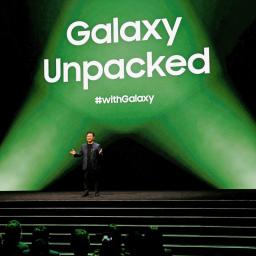 |
by Kris Holt on (#6HT3G)
It's almost time for the first Samsung Unpacked event of the year. We're almost guaranteed to get the first official details about the Galaxy S24 smartphones, which are almost certainly going to have on-device generative AI features. You'll be able to watch Samsung Unpacked at 1PM ET on January 17 on the company's website or YouTube channel.What to expect at Samsung UnpackedSamsung hasn't exactly been subtle about what's on deck for Unpacked. The company has been teasing something called Galaxy AI for mobile devices across several promo videos:Yeah, it's pretty safe to say AI will be a focal point of the showcase. In November, Samsung revealed its Gauss generative AI models. These can handle tasks such as translation, coding assistance and turning text into images. The S24 lineup is also expected to run on Qualcomm's Snapdragon 8 Gen 3 chipset, which can handle many generative AI requests on-device. As such, at least some GAI features won't need to go through the cloud, meaning that they should be processed more quickly.As for the new smartphones, there likely won't be many changes on the hardware front beyond spec bumps. That said, the S24 Ultra is slated to have a fully flat display along with a titanium casing, according to a leaked spec sheet. Just in case there was any doubt about fresh Galaxy phones being in the offing, Samsung already has a pre-order page up for "the newest phone from Galaxy."It's less certain whether we'll see any hardware other than smartphones at the event, though some rumors have indicated the presence of a Galaxy Fit 3 fitness tracker and/or Galaxy Book Pro laptops. This being Samsung, there's always at least a small chance of seeing new tablets, smartwatches and earbuds too.This article originally appeared on Engadget at https://www.engadget.com/how-to-watch-the-new-galaxy-smartphones-get-revealed-at-samsung-unpacked-on-january-17-140011766.html?src=rss
|
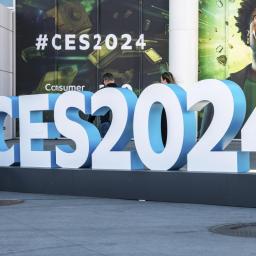 |
by Devindra Hardawar on (#6HT0J)
Just as we expected, AI was the running theme throughout CES 2024. In this episode, Devindra and Producer Ben Ellman chat with co-host Cherlynn Low, who's on the ground in Las Vegas with the Engadget team. We dive into AI coming to almost every product category, new standalone AI hardware, and a surprising amount of shush" tech. In geekier news, we dive into Micron's new RAM format for laptops, which has the potential to reshape the notebook industry, and discuss why we all may want a rolling house robot like Samsung's Ballie. And on a sad note, we chat about the wave of tech layoffs from Google, Amazon and others.Listen below or subscribe on your podcast app of choice. If you've got suggestions or topics you'd like covered on the show, be sure to email us or drop a note in the comments! And be sure to check out our other podcast, Engadget News!Topics
|